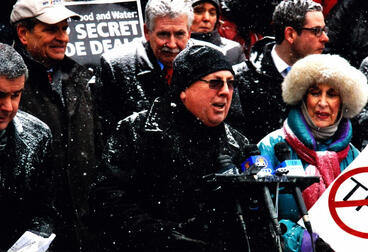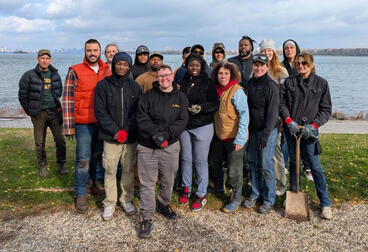You may have read or heard in the media that a vote may take place in 2017 to convene a New York State Constitutional Convention. We urge our members to vote NO.
Why? The state Constitution safeguards fundamental rights you enjoy as a citizen of New York State. These rights include:
‰Û¢‰ÛâRight to be paid the prevailing rate of wages for your labor;
‰Û¢‰ÛâThe 40-hour work week;
‰Û¢‰ÛâRight to a guaranteed pension for public employees;
‰Û¢‰ÛâRight to unionize ‰ÛÒ to organize, form and join unions of your own free will;
‰Û¢‰ÛâRight to free public education through 12th grade until age 21;
‰Û¢‰ÛâPreservation of the Adirondacks, just to name a few.
A constitutional convention puts these guaranteed rights in jeopardy. A convention can eliminate all or some of these rights already enjoyed by New York’s citizenry.
The current Constitution requires that å_every 20 years voters decide whether to hold a statewide constitutional convention which is a forum to tweak, change or radically makeover the state constitution.
The current Constitution does not require a convention to occur; only that the citizenry have an opportunity to require one to occur every 20 years.
A convention that would put the rights and protections already enjoyed by New Yorkers in jeopardy is not necessary in order to amend the present constitution. Provisions presently incorporated in the Constitution can be revoked and new provisions may be added through legislative action resulting in popular vote on the proposed change.
The present Constitution provides for a means to amend without a general convention that would put already established principles in danger of being altered. Present procedure has the legislature pass a proposed change and subsequent voter acceptance or rejection on Election Days when such amendments are put to the general electorate for an up or down vote. If the people agree with the proposed amendment it becomes part of our constitution, if rejected it does not. In either case the people decide on the construction of their state constitution.
In 1997, New York’s electorate ‰ÛÒ you ‰ÛÒ rejected having a convention at all. A coalition of labor unions, environmentalists and conservative activists were joined by the leaders of the State Senate and Assembly. These rank and file constituencies defeated the push for a convention that was led by special interests.
In 1997 the people of New York recognized that a convention would open the door to rolling back New York’s environmental and labor protections.
In 1997, Michael Long, the chairman of the state’s Conservative Party, a strange bedå_fellow with labor on this subject, observed that a constitutional convention was merely a way for lawmakers to duck their responsibility to pass needed changes through the traditional legislative process. “We don’t need a convention to change that.”
The last Convention was held in 1967. All the proposed changes were rejected by New Yorkers when they were put before the citizens for their vote. Millions of taxpayer dollars were expended on the holding of the convention for naught. New Yorkers do not need to expend money on a convention that could be used for good purposes, when amendments to the constitution can be had through the normal legislative process. It is also a given reality that special interests will dominate a convention rather than the will of the general public.
For these reasons we urge our members, their families and friends to vote NO to a NYS Constitutional Convention!
Timeline for the Calling of a NYS Constitutional Convention
New York’s constitutional convention referendum must be placed on the å_November 7, 2017 ballot as specified in New York’s Constitution.
November 7, 2017‰ÛÓNew Yorkers vote to convene a convention.
November 6, 2018‰ÛÓNew Yorkers elect delegates to the convention.
April 2, 2019‰ÛÓConvention convenes and proposes amendment(s) for popular ratification.
November 2019‰ÛÓNew Yorkers vote on every amendment proposed by the convention. If change ratified it goes into effect the following January. If rejected the amendment is not adopted.
IF ON NOVEMBER 7, 2017
VOTERS VOTE NO TO
CONVENING A CONVENTION NO CONVENTION IS HELD.


